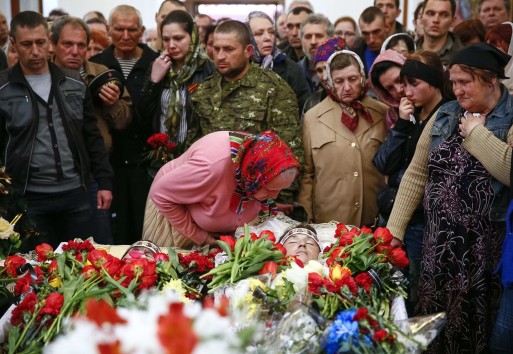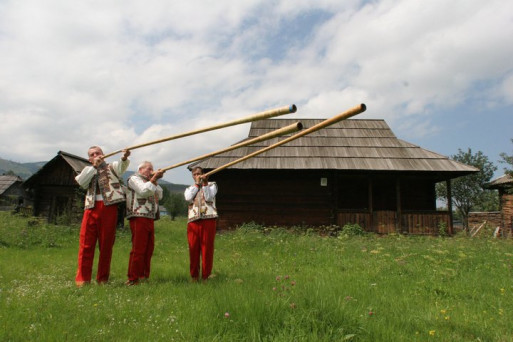The landmass known today as the Ukraine has a long history of colonization dating back to the Roman Empire, when early Christianity was introduced to the area. Despite this, Ukrainians have retained many of their traditions and ancestral beliefs, which show up prominently in their funerary customs.
Funeral homes are uncommon in the Ukraine, so Ukrainian traditions reflect the commonality of people dying at home. Regional customs vary and can be quite complex. This narrative is a brief overview of some of the more common practices and beliefs.

A Ukrainian funeral
(Credit: s-nbcnews.com)
When a death is imminent in a household, the family observes several protocols that are meant to ease the dying person’s transition. Among these, one of the most important is maintaining silence around the person who is dying, as it is believed that breaking the silence makes their process more difficult. Actions are carried out carefully and conversations are quiet. If the dying person is thought to be carrying a lot of sin or worry, the family sometimes cuts a hole in the roof or opens the windows in the room where the person is laying to aid their transition.
Another practice helps cultivate mutual forgiveness between the dying person and those whose lives they have touched. The dying person repeats three times, “Forgive me if I ever said or did anything wrong,” to which each of those present replies, “God will forgive, and I forgive.” During this process, the dying person holds a candle to light their way to truth and God. The wax from this candle, or the candle that was burning at the time of the person’s death, is then used to make a wax ring that is buried with the body. This practice is based on the belief that everyone, whether married or single in life, has a perfect mate in heaven.
Because Ukrainians believe that the soul of a dead person lingers near the head of their body for three days following bodily death, people who were not able to seek or give forgiveness prior to the person’s demise address the body after death.

Trembitas players
(Credit: visit-lviv-ukraine.com)
When a Ukrainian person dies, traditional customs serve two purposes: to ease the person’s passage to the invisible world and to ease the sorrow of the living (as well as mitigate sanitary concerns). A death is announced to the community by loud lamenting in the yard of the loved one’s relatives, and the yard gates of the house where the person has died are tied with embroidered kerchiefs and opened. The gates of any barns on the property are opened as well.
In the Carpathian region, the Hutsul people use trembitas (long horns made of wood) to announce death and mark the stages of a funeral procession. This is accompanied by copious weeping to purify the sins of the dead.

Kolach, a traditional Ukrainian bread featured prominently in funerary, Easter and Christmas traditions
(Credit: pinterest.com)
For three days following a death, the body is positioned on a table or plank with the feet facing the household icons (pictures of saints commonly kept in every house) and the head near the door of the room. The person is dressed according to gender, age and marital status, with many different items placed on the body or in the casket to help in the afterlife. Bread, special headdresses, flowers and coins are common features.
Because the Ukrainian people believe that the soul remains near the body for three days, the body is never left alone or in the dark so that mischievous spirits won’t influence it. During this time, candles are kept lit all through the night, and it is common for visitors to come, especially at nightfall. A midnight supper often relieves the monotony and sorrow of the vigil, and afterward young people sometimes play funeral games, which are meant to elevate everyone’s mood and remind the living that there is still pleasure in the world.
The customs described above are just a small fraction of the complex rituals that are still commonly performed in the Ukraine today. Check out this blog to learn more about the symbolic importance of bread and watch the video below for a rare insight into a Hutsul funeral.

 Ukrainian Funerary Traditions Reflect Pre-Christian Perspectives
Ukrainian Funerary Traditions Reflect Pre-Christian Perspectives


 John Mulaney’s “Funeral Planning” on Netflix: No Real Plan
John Mulaney’s “Funeral Planning” on Netflix: No Real Plan

 Composting Bodies Is Now Legal in a Dozen States
Composting Bodies Is Now Legal in a Dozen States














